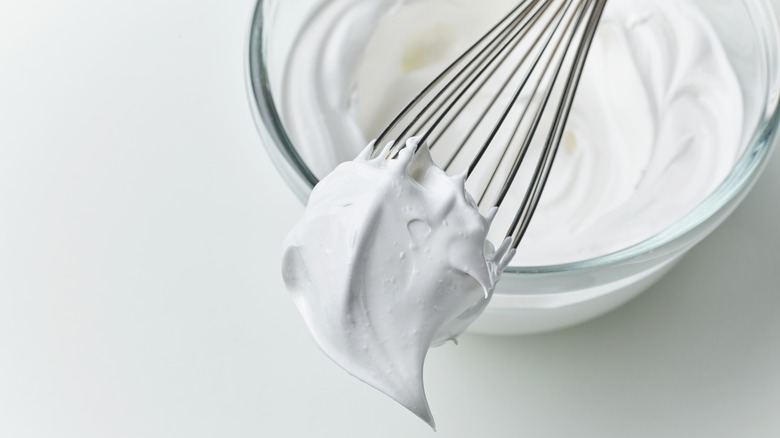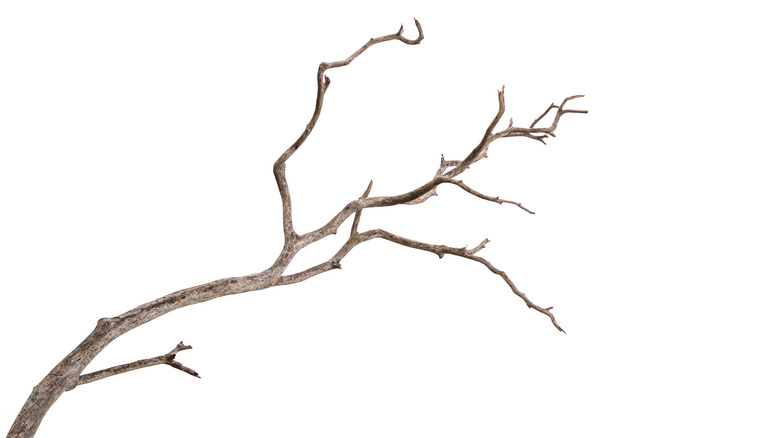The Bizarre Tool Once Used To Make Whipped Cream
Technology and time have brought about fancy new kitchen gadgets but some must-have kitchen tools haven't changed in a century or more. The mortar and pestle, for example, has been around for more than thirty-five thousand years and still gets plenty of use in a modern kitchen. Some other low-fi kitchen gadgets like the whisk have only been around since the 19th century, according to one report by the New York Times. The gadget-gaga Victorians invented the modern wire whisk we still use today. In the 20th century years the still-popular kitchen goods store Williams-Sonoma, founded by Chuck Williams, was the top source for wire whisks in the 1960s and 1970s.
However, recipes like whipped cream and even soufflés predate the invention of the modern whisk. How, then, did cooks of yesteryears manage to make whipped cream? Before the invention of the whisk or the electric mixer, chefs used a stunningly simple tool to make fresh whipped cream.
Nature provides to make whipping cream
Per Food & Wine, whipped cream dates back to the 16th century, found in recipes in Italy and France. In one recipe book that dates to 1629, there is a reference to crème fouettée which is French for "whipped cream." Since there were no Williams-Sonoma chain stores about to buy a modern wire whisk, cooks and bakers used branches to whip the cream into its fluffy, cloud-like texture. They went straight to nature and tore down willow or rush branches from trees to make whipped cream. However practical and economic these nature-made whisks were, in practice the tool was more laborsome: it could take over an hour to make a batch of whipped cream.
If you ever find yourself in a pinch and need a whisk for whipped cream, you can try the willow branch technique–just make sure to whip at degrees under 50 degrees Fahrenheit, or else you'll make butter. For urban dwellers or anyone who doesn't want a tree branch in their whipped cream, try the cocktail shaker hack to whip cream without a whisk.

